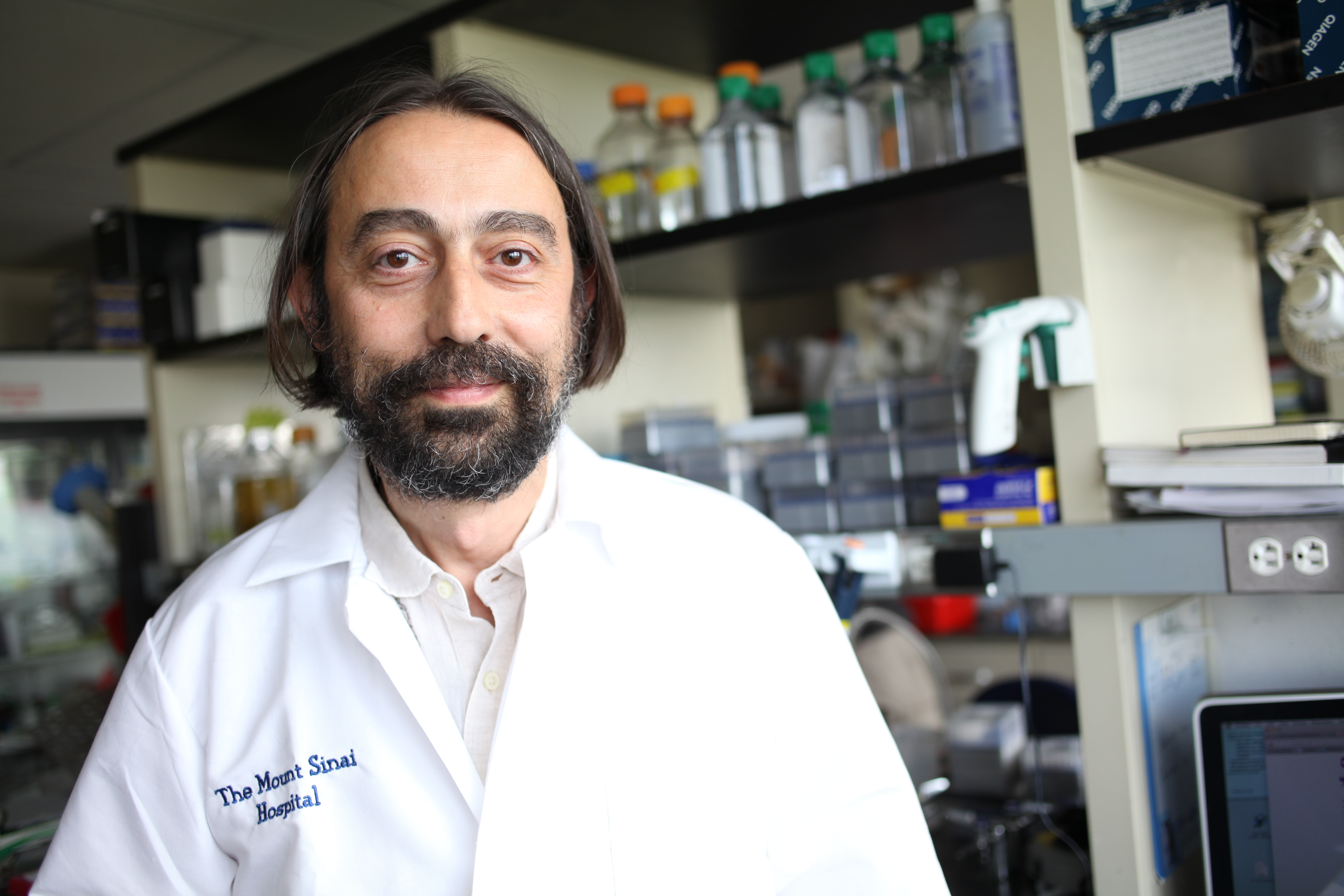Centenary of 1918 Influenza Pandemic | Snapshot: Adolfo Garcia-Sastre
Published in Microbiology

Name: Adolfo Garcia-Sastre
Affiliation: Professor of Microbiology
Professor of Medicine, Infectious Diseases
Director, Global Health and Emerging Pathogens Institute
Director, Center for Research on Influenza Pathogenesis
Mount Sinai School of Medicine
New York, US
Email: adolfo.garcia-sastre@mssm.edu
Website: http://labs.icahn.mssm.edu/garcia-sastre/

Could you tell me a bit about what your research entails?
Research in my lab focuses on a wide variety of viral pathogens, as well as host-pathogen interactions, vaccine and anti-viral drug development. A major focus of the lab is on influenza virus research. Influenza viruses are globally important human pathogens infecting up to 500 million people annually. With the recent emergence of highly pathogenic avian influenza (HPAI) strains, there is a pressing need to understand the pathogenesis of influenza A and develop vaccines and therapies. Our laboratory investigates the molecular biology of influenza viruses and several other negative strand RNA viruses. We developed reverse genetics techniques that allow for the generation of recombinant influenza viruses from plasmid DNA, which has led to major breakthroughs in revealing the molecular basis of influenza virus pathogenicity.
I was the principal investigator of a program project grant funded by NIAID from 2004 to 2011 entitled “Molecular and Biological Characterization of Pandemic Flu”, the main goal of which was to understand the signatures of virulence of pandemic human influenza viruses using genetics, structural, molecular biology, pathology, animal models and genomics tools. As part of this PPG and in collaboration with Chris Basler, Peter Palese and Terry Tumpey, we determined the signatures of virulence of the 1918 pandemic virus after its resurrection under biocontainment at the CDC, based on the viral genome sequence obtained by Jeff Taubenberger from tissue lung specimens of human patients who died 100 years ago from the 1918 pandemic.
How did you become interested in influenza research?
I did my PhD in Spain at the University of Salamanca during the end of the 1980s, on the enzymatic properties of several viral neuraminidases, including the neuraminidase of influenza A virus. This sparked a keen interest in influenza viruses, and I decided to continue my studies through a postdoctoral fellowship under the direction of Peter Palese at Mount Sinai School of Medicine in New York in 1991. Dr. Palese’s group has always been at the forefront of influenza research and in 1990 his laboratory developed the first technique that made possible the genetic manipulation of the influenza virus and the use of modern bimolecular biology techniques to study its biology. Since then I have being working on influenza.
In what ways has the 1918 pandemic most influenced your research, and the wider virology and public health field?
The influenza virus that caused the 1918 pandemic remains an example of how devastating influenza pandemics can be. This makes it imperative to increase our understanding of how we can mitigate influenza in humans, in order to prevent future influenza pandemics.
What do you see as the biggest accomplishments/breakthroughs in the field since the 1918 pandemic? Are there any papers that you feel are must reads for those that aren’t familiar with the field (and briefly, why)?
I think there have been two major breakthroughs.
1. The first isolation and culture of human influenza virus, that allowed its study under experimental conditions and the development of the first influenza vaccines:
W. Smith, C.H. Andrewes & P. P. Laidlaw. A virus obtained from influenza patients. Lancet, 222:66-68 (1933)
2. The development of techniques to rescue influenza viruses from plasmid DNA, which allowed the molecular study of the virus and of its tropism and disease determinants, as well as the generation of modern improved influenza virus vaccines. This was achieved in 1999 independently by two different groups of investigators (I had the privilege of being part of one of the groups):
G. Neumann, T. Watanabe, H. Ito, S. Watanabe, H. Goto, P. Gao, M. Hughes, D. R. Perez, R. Donis, E. Hoffmann, G. Hobom & Y. Kawaoka. Generation of influenza A viruses entirely from cloned cDNAs. Proc. Natl. Acad. Sci. (USA), 96:9345–9350 (1999)
E. Fodor, L. Devenish, O. G. Engelhardt, P. Palese, G. G. Brownlee & Adolfo García-Sastre. Rescue of influenza A virus from recombinant DNA. J. Virol., 73: 9679–9682 (1999)
What do you see as the main challenges for research in your part of the field in the coming years?
We have known for many years that the current influenza virus vaccines are not optimal, necessitate of annual reformulation and use due to antigenic changes in the circulating influenza viruses, and that there are limitations that prevent their timely use to mitigate the effects of pandemic influenza during the first wave of infections. While newly developed experimental vaccination strategies give hope that better and broad protective universal influenza vaccines could be made, it remains to be seen whether such strategies are safe and immunogenic in humans, and these studies will be lengthy and expensive.
Follow the Topic
-
Nature Microbiology

An online-only monthly journal interested in all aspects of microorganisms, be it their evolution, physiology and cell biology; their interactions with each other, with a host or with an environment; or their societal significance.
Related Collections
With Collections, you can get published faster and increase your visibility.
Progress towards the Sustainable Development Goals
Publishing Model: Hybrid
Deadline: Ongoing
The Clinical Microbiome
Publishing Model: Hybrid
Deadline: Mar 11, 2026


Please sign in or register for FREE
If you are a registered user on Research Communities by Springer Nature, please sign in